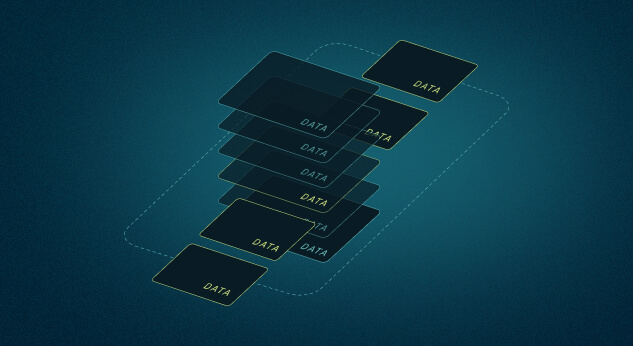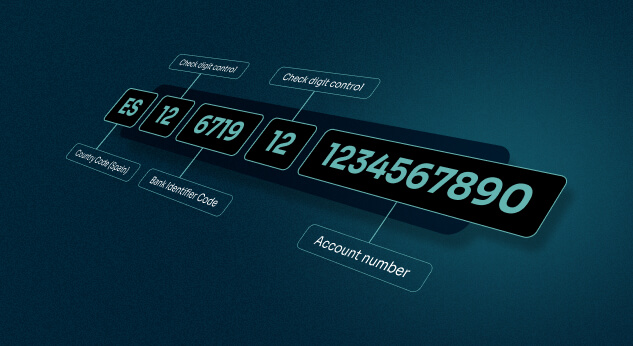Customer experience. In board rooms, product scrums, and marketing departments around the world, there are few terms that grab the eyes and ears of key decision-makers faster. After all, we live in an age where customer experience (CX) can make or break a company, regardless of how great their underlying product is. Indeed, CX is becoming so central to businesses that universities are now offering masters programs dedicated to the subject. For financial service companies, Open Banking provides a toolbox to build great CX.
The concept is relatively new. For years, banks and other financial institutions were able to safeguard their clients’ data along with their cash. Recently, governments around the world compelled the industry to make these data accessible to anyone who wants it (with the client’s consent, of course). Thanks to the EU’s PSD2, along with comparable rules in the UK, Australia, Canada, and beyond, banking information now flows freely from APIs.
As you can imagine, the disruption from this deluge of new sources of data is enormous. Practically all aspects of finance and banking can be re-designed from the ground up. Customer Experience is no exception. In fact, we think that CX is one of the primary beneficiaries of these changes. We’ve compiled the seven biggest ways we see Open Banking improving customer experience.
One-Stop Financial Operations
Account Information Service Providers (AISP) connect users with all of their financial data. The AISP can then aggregate a person’s global bank account balance into one centralized platform. Combining an AISP with a payment initiation service, a company can radically transform the way people manage financial operations.
For example, a freelance IT developer receives payment from clients into a few different bank accounts and in a couple of currencies. A firm could aggregate all of her balances onto one screen and allow her to create automated transfers between the accounts. When she has to pay her rent and utility bills from a specific account, the funds will already be in place in the currency she needs. Furthermore, if she hasn’t received payment from a client yet, she’ll see it directly.
Contrast this with spending hours each month logging into multiple different bank accounts — increasing the chance of errors and frustration in the process — and it is clear how Open Banking will positively transform her banking operations experience.
Unshackling customers from their bank’s antiquated interfaces
Sometimes, a person has no choice but to stay with their bank, even if their interface isn’t up to modern standards. For example, David took out a mortgage when he bought his apartment. As part of the terms and conditions of the loan, he had to open a current account and route his salary to the issuing bank. If David didn’t like the bank’s web or mobile app, there was nothing he could do other than accept it as part of the deal and learn to live with it. David became reluctant to open his banking app as it’s slow and unreliable, preventing him from fully seeing his financial picture.
With Open Banking, that changes. Now, users can connect their current accounts to any app of their choosing. David finds an app that makes banking fun and lets him engage with his personal finances. Meanwhile, he still complies with his mortgage contract, only now, the bank is merely a financial back-end to a much richer front-end.
A personal financial manager for the masses
The opening of the data floodgates brings a torrent of new possibilities. While any firm could plug into a bank’s API and display account balances on a crisp-looking dashboard, it’s only the tip of the iceberg.
With the right vision and data scientists, companies can run each user’s data through a myriad of algorithms. The result? Valuable insights on customer spending habits, money management, and more. The company becomes an adviser to each user, helping them make better financial decisions and offering customized products such as insurance and investments.
The more personally the platform speaks to the user, the more often he or she will return to the platform. As habits visionary Nir Eyal writes on his website, “Developing a customer habit of using your product will yield a growing base of active and engaged consumers.” Successful firms in the era of Open Banking will be the ones who deliver a personal, habit-forming experience.
A more fluid online shopping experience
Open Banking’s benefits to end-users aren’t limited to banks and Fintechs. Online retailers can improve their overall CX by incorporating some of the main features of the initiative. Using payment initiation services, e-commerce companies can offer a more streamlined checkout process thanks to cardless payments.
Payment initiation is the process by which a TPP (third party provider) initiates a bank transfer on behalf of a user using their online banking credentials. With this method, instead of the customer’s credit card provider mediating the payment, the money is moved directly from their account to that of the retailer via transfer from their bank account. This allows merchants to offer cardless payments, as the only thing users need to pay like this are their online banking credentials.
In addition to the advantages discussed above, payment initiation (which is provided by PISPs, Payment Initiation Service Providers) allows merchants to introduce intelligence into payment processing to reduce costs and increase speed. Bank transfers between accounts at the same bank clear in real time, so the merchant’s PISP can detect the source account’s bank and route it to a merchant-owned destination account at the same bank so that payment is received in real time and there are no fees added on.
Meeting the banking demands of Millennials and Generation Z
People under 40 years old represent the largest-growing demographic on the planet. Nearly every person in this group got their first experience with computers at an early age. Indeed, tech is so ingrained with this demographic that industry experts state that millennials and Gen Z see “Banking as a Service” rather than as a traditional banker-customer relationship. The key to capturing this demographic is to engage with them on their terms. Open Banking allows both banks and Fintechs alike to speak more personally to a group skeptical of the established financial system.
According to a joint study by Facebook IQ and Accenture, 61% of people aged 18-34 integrate Fintech products alongside their bank accounts in their day-to-day lives. If that wasn’t enough, a report by MarTech Series found that 31% of Gen Zers believe they won’t need traditional banks in the future. If financial companies want to build relationships with this demographic,
then building trust-evoking apps that customers enjoy using is a must.
A new twist on a stale but mandatory process
“Know Your Customer” checks are a compulsory part of any client onboarding process. Financial service providers and other industries have a legal obligation to verify each user’s identity. While necessary, this step creates friction in the sales process. Open Banking presents an opportunity to improve both KYC and AML checks by allowing banks, Fintechs, and other regulated companies to work with the best providers for their needs.
As Natasha Brewer from BCS Consulting wrote, “From a customer perspective, this will further reduce barriers to switching and ensure access to the most suitable product.” As the process improves, so too will CX. In turn, users will be more likely to stay on the platform, building a valuable ongoing relationship with the provider.
Pushing companies to make finance apps that just work
In Fintech, we talk about Open Banking a lot because it’s our business. According to Marcus Martinez, retail consumers generally don’t. What they do care about is whether or not the service they use works.
Challenger banks, Fintechs, established financial institutions, and supporting industries can leverage this open framework to build amazing, functional interfaces for end-users. When a user goes onto a banking platform, they expect it to do exactly what they want, and they want it fast. According to a report from the online marketing firm Unbounce, users expect websites to load within 3 seconds. If that wasn’t enough, 70% of consumers admit that page speed influences their likeliness to convert. In other words, we expect things to work, and we expect them to work now.
Since bank customers can now freely share their financial data, switching to better-built platforms requires minimal effort from the user. The companies that succeed in this environment will be the ones that offer lightning-quick, reliable apps.
Open Banking is already bringing sweeping changes to the global financial industry. Tedious identity checks are becoming increasingly faster and more automated. New, direct links between consumers and merchants that weren’t possible before are now not only possible but are required to provide the experience demanded by customers. Together, the level playing field created by Open Banking will only push firms to deliver better experiences for their customers.









